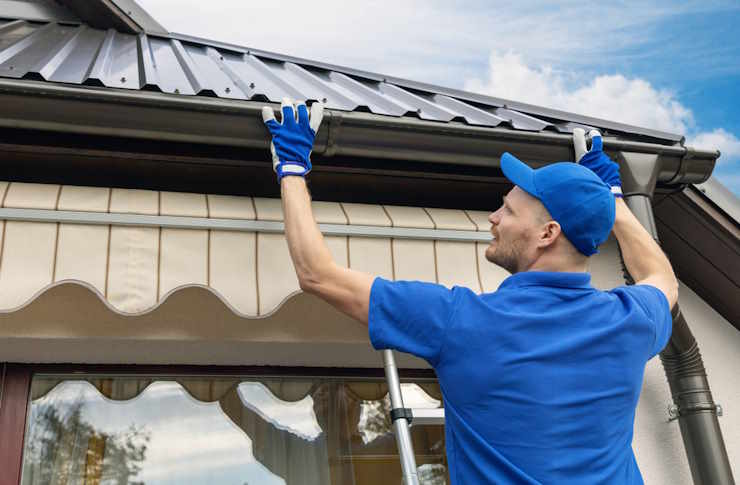Rain Gutter Essentials for House, Home, and Roof
A well-installed rain gutter system is one of the most effective yet often overlooked elements of a durable house. Gutters channel roof runoff away from walls, foundations, landscaping, and entryways, reducing water-related damage that can be costly and disruptive. Whether you live in a single-family home, manage a multi-story building, or are planning a roof replacement, understanding how gutters work, what types are available, and how to maintain them helps protect the long-term health and value of your property. This article covers practical guidance for choosing, caring for, and optimizing gutters to shield your roof, foundation, and overall home performance.

How do gutters protect a house?
Gutters intercept rainwater flowing off the roof and divert it through downspouts away from the house. Without gutters, water can erode soil near the foundation, soak into basements or crawlspaces, and stain or rot siding. Properly sized and pitched gutters prevent overflow during heavy rain and reduce the risk of water pooling near doors and windows. For older houses, gutter replacement or resurfacing can address leaks and sagging that compromise performance. Regular inspection after storms helps identify detached sections, missing fasteners, or clogged areas needing prompt repair.
What are common gutters types and materials?
Gutters come in sectional and seamless styles and are made from aluminum, galvanized steel, vinyl (PVC), copper, or zinc. Sectional gutters are modular and easier to install for DIYers, while seamless gutters are formed on-site to minimize joints and leaks. Aluminum is lightweight, rust-resistant, and widely used; steel offers strength but requires corrosion protection; copper is durable and visually distinctive but more expensive. Vinyl is affordable and low-maintenance but can warp in extreme temperatures. Selecting material depends on budget, climate exposure, building design, and desired lifespan.
How do gutters help your home’s foundation and landscaping?
By collecting roof runoff and directing it away, gutters prevent concentrated water flow that can undermine foundations or erode graded slopes around a home. Proper downspout placement and extending runoff away from the structure protect basement walls and reduce basement moisture and mold risk. For landscaping, controlled drainage prevents soil displacement, saves plantings from waterlogging, and minimizes landscape maintenance. Integrating splash blocks, underground drainpipes, or rain barrels can further manage runoff and reuse water for irrigation while preserving both the home and surrounding yard.
Which gutter solutions suit a building’s size and design?
Building scale and architectural style influence gutter profile and capacity. Larger roofs or steep pitches generate more runoff and often require wider gutters or additional downspouts. Commercial buildings or multi-unit structures may use larger-capacity half-round or custom box gutters to handle runoff volume. Architectural considerations—such as historical aesthetics—might favor copper or half-round profiles, while modern homes often pair K-style or box gutters with concealed hangers for a streamlined look. Consult local building codes and consider snow or debris loads in your area when choosing profiles and spacing downspouts.
How do gutters extend your roof’s lifespan?
Gutters protect roof edges and eaves from constant water exposure that can accelerate shingle deterioration, rot roof decking, and damage fascia and soffits. When a gutter system is clogged, water backs up under shingles and creates conditions for leaks and mold. By maintaining clear channels, you reduce freeze-thaw stress in colder climates and prevent saturation-related degradation. Regular gutter maintenance—clearing debris, checking seals and slope, and ensuring secure connections—supports roof longevity and can delay costly roof repairs or premature replacement.
Conclusion
Rain gutters are a relatively simple investment that offers significant returns in property protection. From material choice and sizing to placement and upkeep, decisions should reflect the house or building’s roof design, local climate, and maintenance capacity. Properly designed and maintained gutters preserve foundations, protect roofs and siding, and manage landscape integrity. Regular inspections and timely repairs help ensure your gutter system continues to perform, safeguarding the structural health and value of your home over time.






